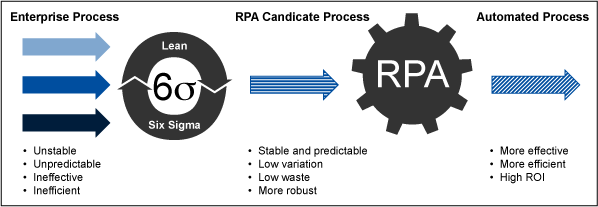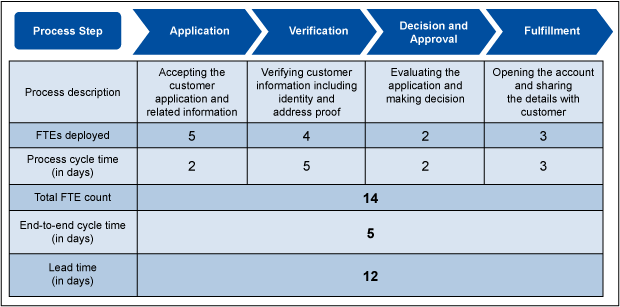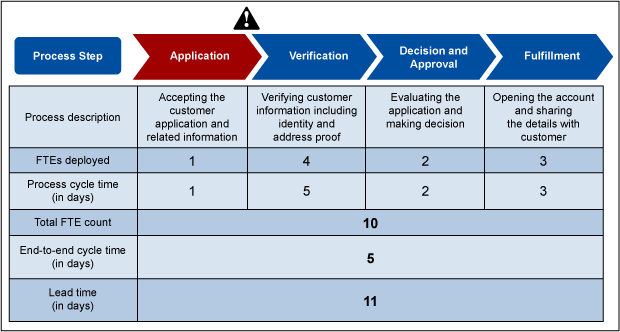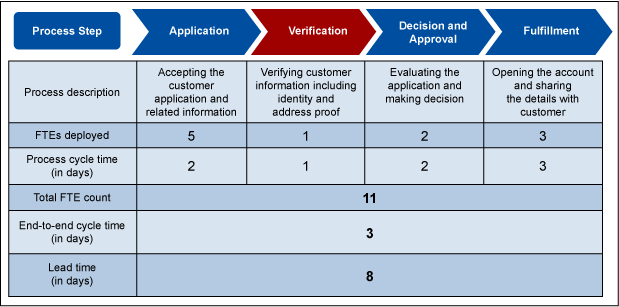
Robotic process automation (RPA) is the use of software robots to mimic the actions a human user would perform on a computer application in order to automate business processes that are highly repetitive and rule-based. RPA is emerging as a disruptive force in the service economy, where many middle- and back-office tasks are highly human intensive and fall into that category of repetitive and rule-based.
Organizations are increasingly embracing RPA to automate business processes to aggressively reduce costs and gain efficiency. The financial services and retail industries have taken the lead in adopting RPA, but there is evidence of increasing traction for RPA within the manufacturing and healthcare sectors as well. According to services research company Horses for Sources, the overall market of RPA grew by 64 percent to $200 million in 2016 and is expected to grow by 70 percent to 80 percent in 2018 due to the robust demand for this automation.
RPA Candidate Process Characteristics
Not every process is a good candidate for automation. Processes that have the following unique characteristics make them more suitable for automation than others.
- Bottleneck: In the entire value chain, the bottleneck process is the prime candidate for automation because the throughput of the bottleneck process determines the efficiency of the overall value chain.
- Stability: A stable and capable process with low variation is an appropriate candidate for automation because its behavior can be predicted and, therefore, its processing logic can be designed and coded for automation.
- Robustness: A robust process where all failure modes are known is an appropriate candidate process for automation because all its exception flows and behavior can be designed and coded for automation.
Lean Six Sigma and RPA
What does the future hold for Lean Six Sigma (LSS) in this age of automation when organizations can significantly reduce their processing time (up to 80 percent) by adopting automation? Automating a broken process yields nothing more than a waste and at a rapid pace. As management expert Peter Drucker said, “There is nothing so useless as doing efficiently that which should not be done at all.”
LSS improves process performance by systematically eliminating wastes and reducing variation from the process. In the automation journey, LSS can assist organizations with assessing the candidate process and making the process more suitable for automation.
LSS can help organizations in the following ways at the onset of the automation journey.
- Identifying the right candidates: Constraint or bottleneck processes are prime candidates for RPA. LSS tools such as bottleneck analysis can identify the right candidate processes within the value chain by spotting constraints.
- Improving process stability: LSS can improve the stability and capability of the process by reducing variation in the process, thereby making the process more suitable for automation.
- Improving process robustness: LSS tools such as failure mode and effects analysis (FMEA) can uncover the potential failure modes of the process and develop suitable mitigation plans for them, thereby making the process more suitable for automation.
An optimized and standardized process post-LSS is a better candidate for RPA. Deployment of LSS followed by automation improves both the effectiveness and efficiency of the process and delivers better return on investment (ROI) for an automation initiative.
Apply LSS at the beginning of an automation journey to identify the right candidate process and make the process well-suited for the automation.

Case Study: Opening a Bank Account
Consider a case of automation as applied to the process of opening an account at a bank.
Process Overview
A simple account opening value chain at a bank consists of four process steps:
- Application
- Verification
- Decision
- Approval and fulfillment
The following are the operational parameters for a standard account opening process.
- Total number of full-time employees (FTEs) = 14
- Cycle time = 5 days
- Lead time = 12 days

Automation Without LSS
The bank undertakes an initiative to deploy automation in the account opening process. It selects the Application process as the candidate process for automation because it has highest number of FTEs. The following is the operational performance of the account-opening process after automation:
- Total number of FTEs = 10 (28.6 percent reduction in total FTE count)
- Cycle time = 5 (no reduction in cycle time)
- Lead time = 11 (8.3 percent reduction in lead time)
Since a non-bottleneck process, Application, is now automated, a large inventory of applications is accumulated at the Verification stage.

Automation with LSS
The bank leverages LSS tools to assess the candidate process for automation and to reduce variation in the candidate process. The bank selects the Verification process as the candidate process for automation because it is a bottleneck process with the longest cycle time in the entire value chain.
An FMEA is conducted for the Verification process, which helps the bank discover potential failure modes (exception flows) of the account opening process such as a scenario where a customer has valid identity proof but invalid address proof. This enables the bank to manage all exceptional flows in the automation and avoid a failure of process automation due to exceptions.
The following are the operational performance metrics of the account opening process post automation and leveraging LSS:
- Total number of FTEs = 11 (21.4 percent reduction in total FTE count)
- Cycle time = 3 (20 percent reduction in the cycle time)
- Lead time = 8 (33.3 percent reduction in lead time)
Clearly, the automation with LSS delivers better operational performance for the account-opening process with a 20 percent reduction in cycle time and 33.3 percent reduction in lead time.

Conclusion
Process excellence continues to be relevant in this age of automation. Process optimization or redesign – combined with LSS – should be an integral part of any automation journey.